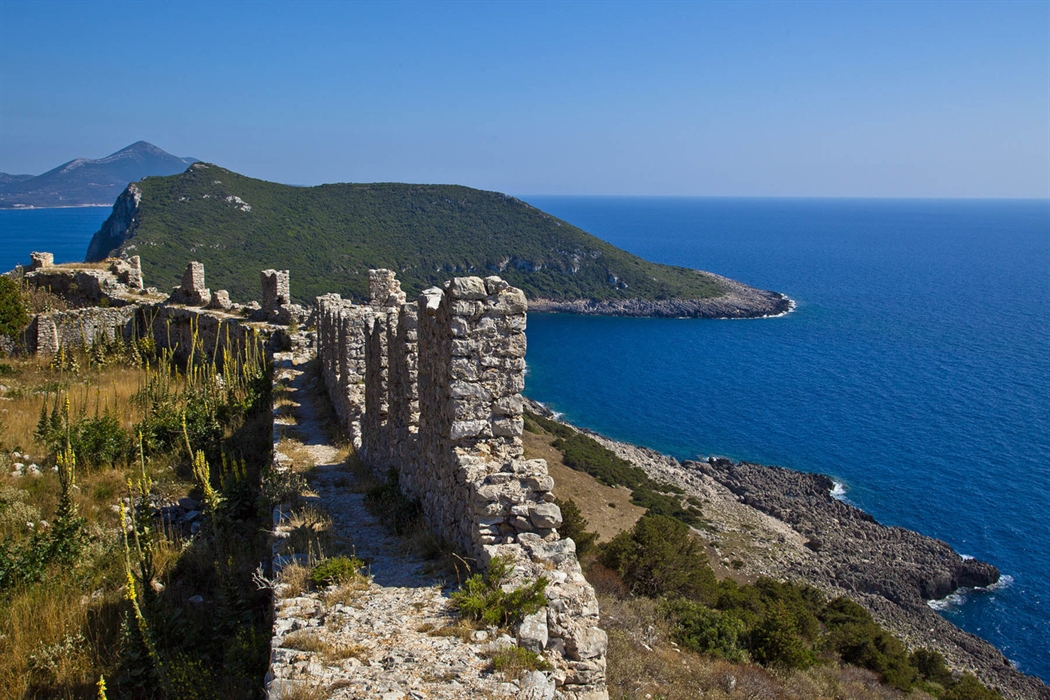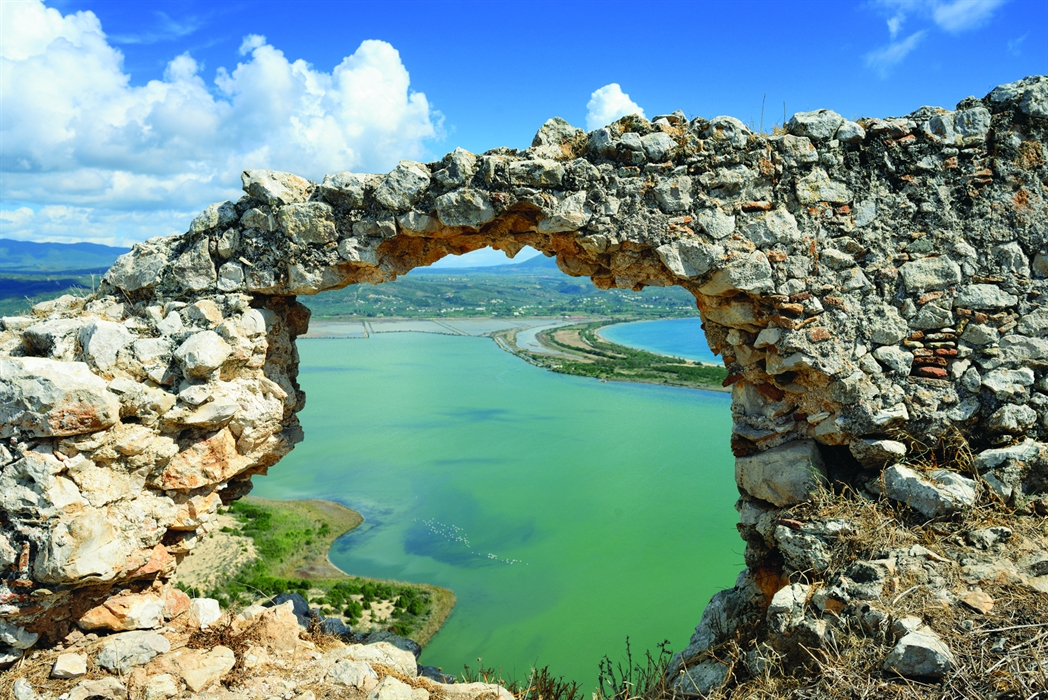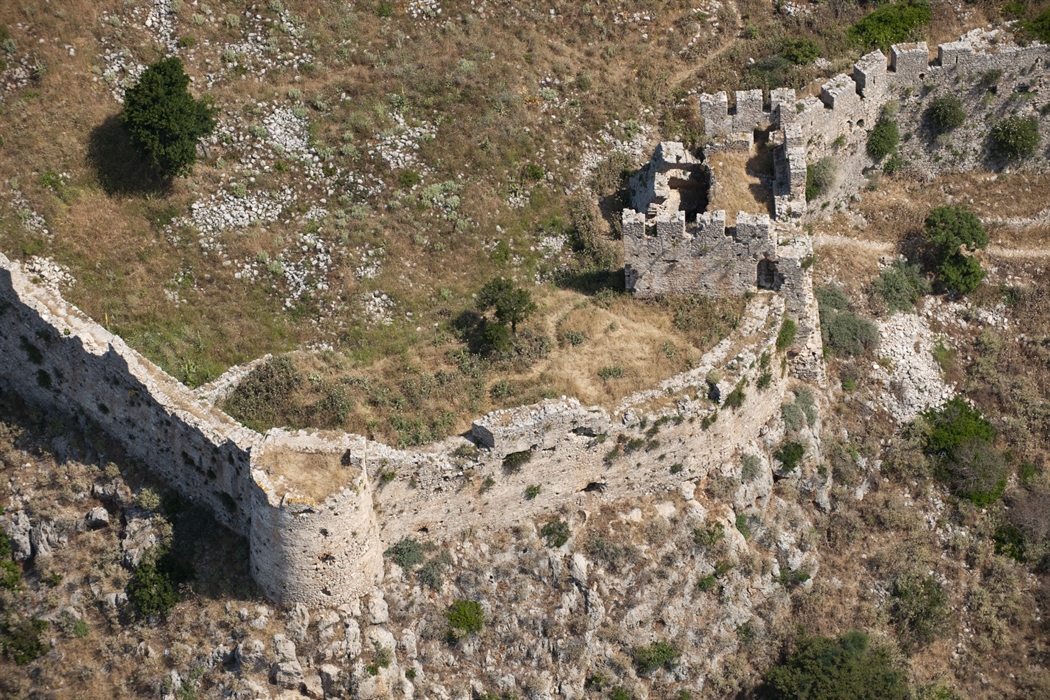Pylos Palaiokastro (Old Navarino Fortress)
It might take a bit of effort to climb up to the Frankish Palaiokastro (or Old Navarino Fortress), but the view once you get there is amazing. And then, of course, there’s the castle itself which played a very important role in the region from the 13th century until the beginning of the 19th century.
It might take a bit of effort to climb up to the Frankish Palaiokastro (or Old Navarino Fortress), but the view once you get there is amazing. You can look out over the Ionian Sea to the west, if you look to the north you get an outstanding view of Voidokoilia bay and that famous semi-circular stretch of sand, to the east you can see the lagoon of Gialova, and looking to the south and southeast it’s the Bay of Navarino, Pylos, and Sfaktiria.
This view was part of the reason the castle was built here as it could control the northern entrance to Navarino Bay and its port. All in all, the castle played a major role in the eventful history of Pylos.
It was first built by the Franks in the 13th century, then continued by great Venetian engineers in the 15th century and then completed by the Ottomans. After they were defeated in the naval battle of Nafpaktos in 1573, the Turks built the new castle (Neokastro) on the other side of the gulf, and at that point Palaiokastro lost its strategic importance.
Some milestones in its history:
In 1278 the medieval castle was built on the ruins of an ancient fortification by Nicholas II of Saint Omer, the French feudal ruler of Thebes. In 1381 it was occupied by the Navarrese who made it their base and then in 1423 it was bought by the Venetians to better protect their remaining strongholds in Messinia. Unlike other Peloponnese castles, it did not fall to the Turks in 1460, but remained Venetian. In 1500, however, Sultan II Bayezid conquered Methoni and destroyed it, so the defenders of the Navarino castle surrendered to avoid the same fate. The castle thrived, and in 1668, when the Turkish traveller Elivia Celebis visited the area, he counted 80 houses, a mosque, five shops and a hammam inside the castle. But its fortunes changed, and by 1816 a French traveller found it almost deserted.
Both castles in Pylos, Palaiokastro and Niokastro, were liberated by Greek fighters at the start of the Greek War of Independence in 1821, but Ibrahim besieged Palaiokastro and as the Greeks no longer had any supplies, they were forced to surrender it to the Turks again in April 1825. During the famous Naval Battle of Navarino, the Turks and Egyptians in the castle attacked the allied ships with cannons, but were forced to withdraw in October 1828. When the Greeks and French went in to the historic castle, they found it in ruins.
Architecture. The castle has been modified and reconstructed many times over the centuries. The interior is separated into two parts by a transverse wall. It is thought that the inner enclosure -which was reinforced with square and semi-circular towers-, was in the same place as the ancient acropolis and the original Frankish castle.
The southern part was added much later by the Venetians or the Turks. The castle we see now mostly dates from the late 16th century. At the east side there are no walls, as the natural fortification of the rock provided sufficient protection.
The entrance to the castle is through the (half-demolished) gate which was covered by pointed arches and protected by a barricade. It is located on the south side of the precinct and is reached by a path that starts from the southernmost point of the Korifasi peninsula. The walls and towers are still standing in many places. Inside there are ruins of public and private buildings, a church and underground water tanks.
Below the walls of the castle is “Nestor’s Cave” which is believed to have been connected to Palaiokastro. It was first explored by Heinrich Schliemann in 1874.
Location
Find the destination on the interactive map below.
Categories
Weather
Σχετικό περιεχόμενο χρηστών (UGC)
Ενημερωθείτε για ενδιαφέροντα θέματα γύρω από τον προορισμό μέσα από το περιεχόμενο των χρηστών μας
Discover 7 hidden gems of the Peloponnese
Many of you may have already visited some of the most renowned attractions…
TOP 10 archaeological museums in the Peloponnese
Olympia, Mycenae, Epidaurus, Diros Cave, Ancient Corinth, Messene and…
TOP 10 Castles in the Peloponnese
Castles galore! Mystras, Monemvasia, Palamidi, Methoni, Koroni,…
Newsletters
- About us
- FAQ's
- Map
- Tourism information centers
- Disclaimer
- Sitemap
- Our brand
- Media roum
- Adding your bussiness
- Corporate
- MICE

Peloponnese. Greece beyond the obvious





Design and creation from Cosmote
Marinas and Moorings
Diving centers
Get inspired
- Media gallery
- Blog
- The Peloponnese in the media
- Your feedback
- Users' general content
- Users' local products
- Users' events content
- Ask a local
More
- Accommodation
- Travel agencies
- Restaurants
- Services
- Destinations Map
- Weather
- Public transport
- Events
- Frequently asked questions
- Useful phones
- B2B
- Destination Data
- Contact



